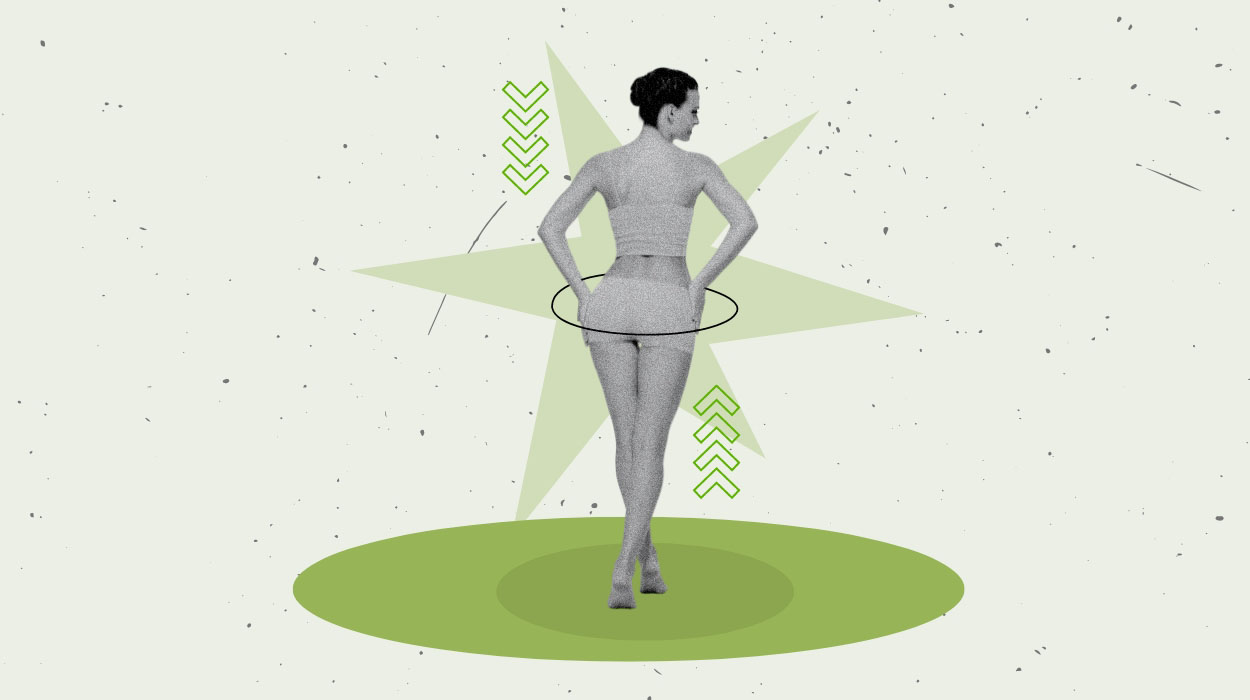
In this modern age, many individuals crave perfect body fit and curvier silhouette, especially in the hip region. Meanwhile, achieving wider hips isn’t some rocket science technique that most models across the media are projecting. You don’t need to rely on drugs, as adequate exercise and diet can help achieve the desired weight result. You may search for the best protein for muscle gain to tone up your body.
It’s important to note that genetics play a significant role in determining body shape. Hence, approach the methods discussed in this piece with realistic expectations, as figures are unique to individuals. You can discover various exercises and dietary tips on how to get big hips.
The main objective of this guide is to help readers prioritize overall health and well-being while providing them with helpful hip weight information.
How To Get Bigger Hips?
Certain exercises will strengthen and tone the muscles in your hip and waist region. They include:
How To Get Wider Hips: Exercises To Try
Concentrate on these exercises designed for how to widen hips, targeting the muscles surrounding your hips:
Squats
Squatting is an exercise that primarily targets the muscles of the lower body, including the glutes. This exercise also targets the oblique muscles, making it an ideal butt workout. You may read about the benefits of hack squats for a better understanding.
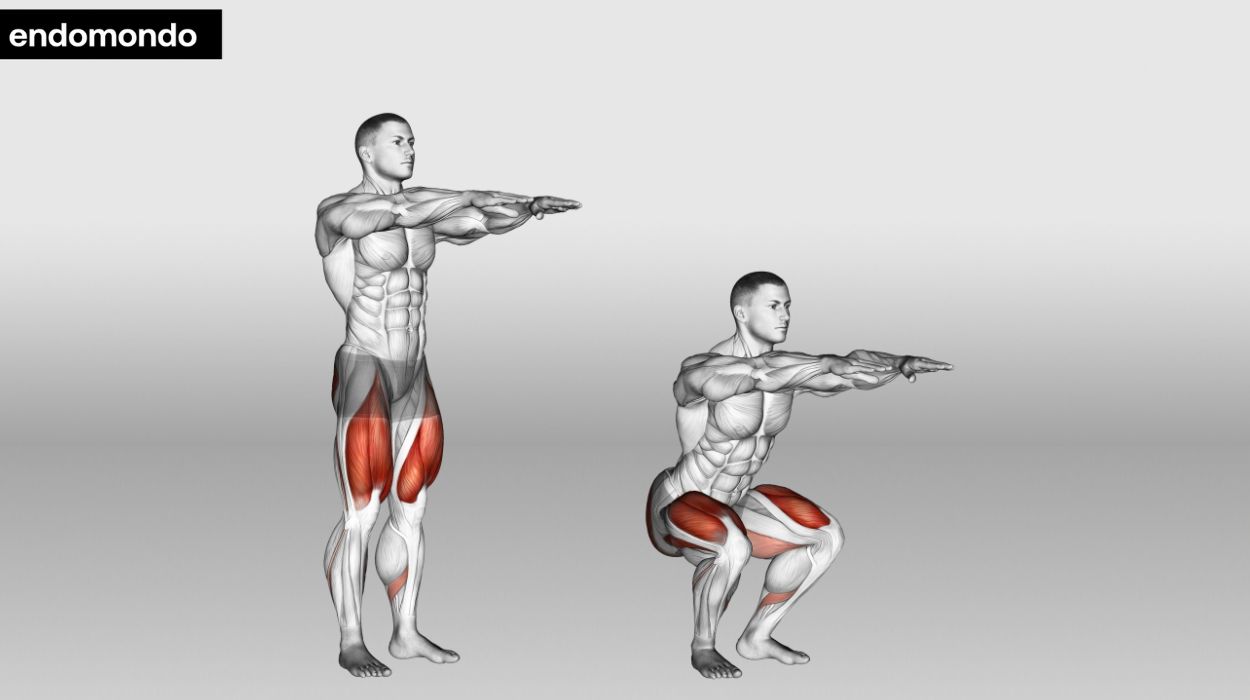
How to do:
- Stand with your feet slightly wide, pointing your toes slightly forward.
- Engage your core and keep your chest lifted.
- Lower your body by bending your knees and pushing your hips back like sitting in an imaginary chair.
- Keep your weight in your heels and ensure your knees stay aligned with your toes.
- Go as low as you comfortably can, ideally until your thighs are parallel to the ground.
- Push through your heels and squeeze your glutes as you return to the starting position.
Tips:
- Keep your feet shoulder-width apart and your back straight; when squatting down, ensure your hips go back as if sitting in a chair, and keep your knees in line with your toes.
- Aim to lower yourself until your thighs are at least parallel to the floor, keeping the movement controlled and steady, especially on the way up to engage your muscles effectively.
- Breathe in as you lower down and exhale when pushing back up to standing, as proper breathing helps maintain stability and strength during the exercise.
Optimal Sets and Reps: Aim for 3 to 4 sets of 8 to 12 reps.
Side Lunges And Curtsy Lunges
Side lunges involve a lateral movement, which engages the hip abductor muscles, particularly the gluteus medius, and minimus.
Curtsy lunges target all the glute muscles of the lower body from different angles compared to traditional lunges. Its variations engage different muscle fibers that enhance your range of motion.
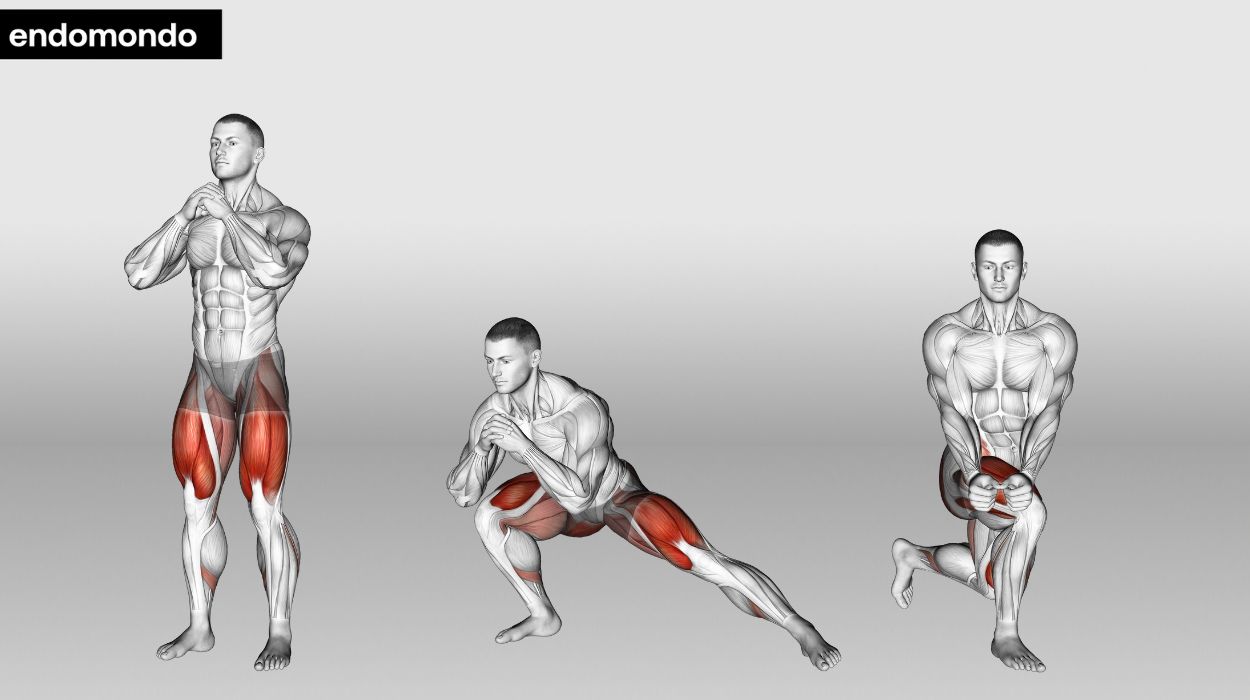
How to do side lunges:
- Stand with your feet slightly wide, pointing your toes forward.
- Keep your chest lifted, engage your core, and maintain a neutral spine.
- Take a wide step to the side with your left leg, keeping your toes pointing forward or slightly outward.
- With the left knee bent, push your hips back, lowering your body into a lunge position.
- Keep your right leg straight and maintain a flat foot on the ground.
- Push through the heel of the lunging leg and engage the glute muscles as you return to the starting position.
- Repeat the movement on the right foot, alternating sides for each repetition.
How to do curtsy lunges:
- Stand with your feet wide apart and maintain an upright posture.
- Take a step diagonally behind you with your left leg, crossing it behind your right leg.
- Lower your body into a lunge position, bending both knees and keeping your torso upright.
- Ensure that your front knee stays in line with your toes and doesn’t collapse inward.
- Push through the heel of your front foot to return to the starting position.
- Repeat the movement on the right foot, alternating sides for each repetition.
Tips:
- Keep back straight, step wide, push hips back, knees over toes.
- Cross your leg behind at an angle, lower slowly, keep your hips square, and maintain balance.
- Engage the core, move smoothly, and focus on form over speed.
Optimal Sets and Reps: Aim for 3 sets of 10-15 reps on each side.
Fire Hydrants
Incorporate fire hydrant exercises into your lower body workout routine and other exercises targeting the hip width and glute muscles.
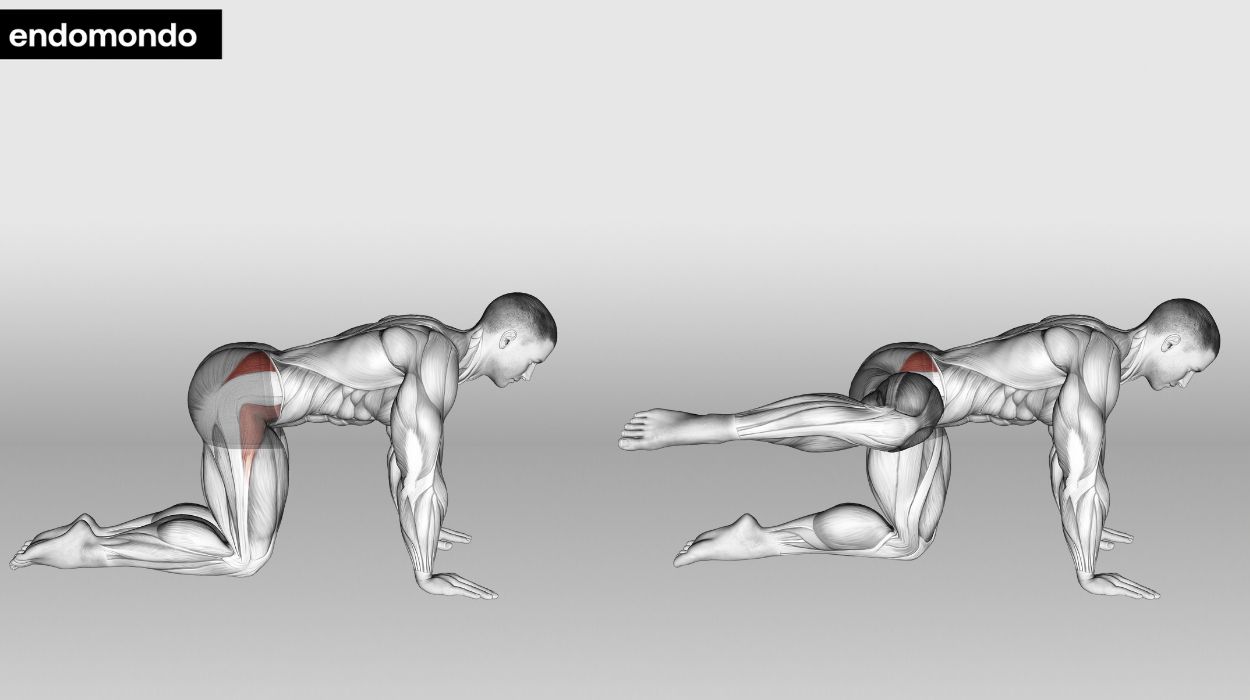
How to do:
- Start on all fours, with your hands directly under your shoulders and your knees under your hips. Maintain a neutral spine.
- Engage your core for stability and balance.
- Lift your left leg to the side, keeping your knee bent at a 90-degree angle and your foot flexed.
- Lift your leg until your inner thighs are parallel to the ground, maintaining a controlled and steady movement.
- Lower your left leg back down to the starting position.
- Repeat the movement on the right leg, alternating sides for each repetition.
Tips:
- Keep core engaged, hips square to the ground, and avoid tilting to the side.
- Lift your leg using your glutes, not momentum; move smoothly without rushing.
- Hands under shoulders, knees under hips, neck neutral, gaze downward.
Optimal Sets and Reps: Perform 3 sets of 12-15 reps per leg.
Benefits Of Wider Hips
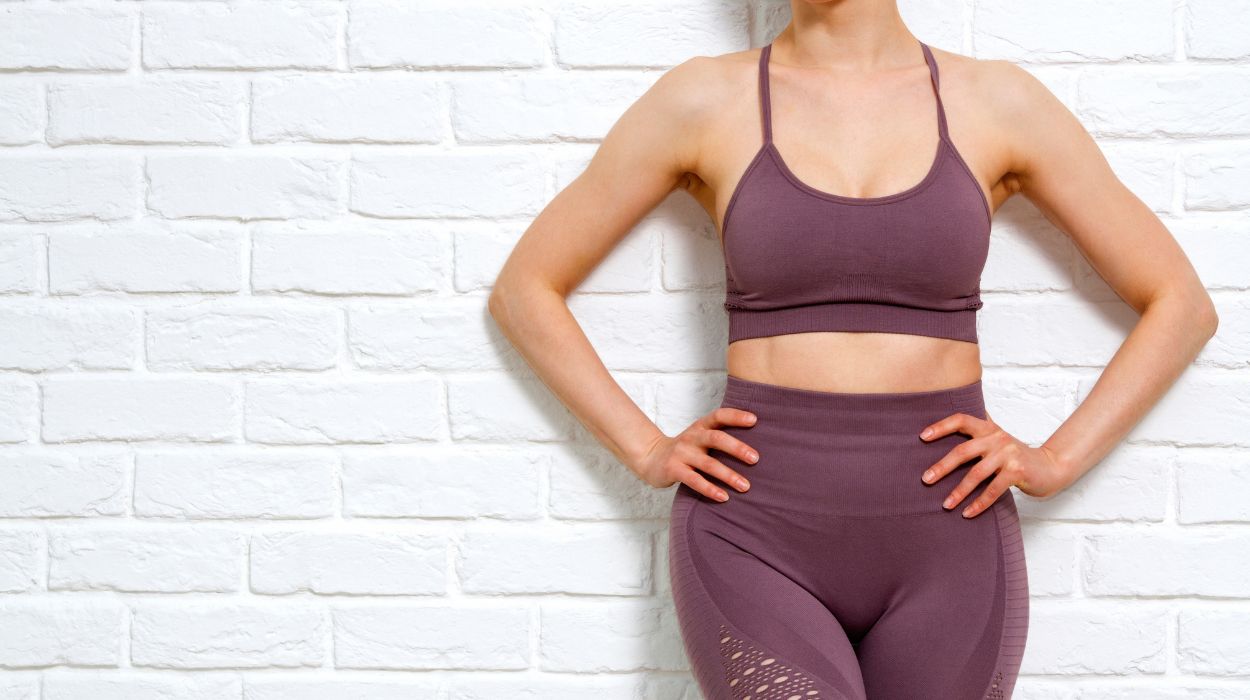
Having wider hips offers several benefits including:
- Curvier silhouette: Typically, bigger hips improve the overall body appearance by contributing to a more curvaceous figure.
- Boosts self-confidence: Even though the old wives’ tale assumes women with bigger hips have a child-bearing advantage, some modern women hold the same belief. On the other hand, this belief boosted traditional women’s confidence in society.
- Better clothing fit: Bigger hips make finding clothes that fit well easier, as most skirts and pants today are designed to accommodate curvier hips.
- Improves athletic performance: Wide hips offer an additional advantage in some sports activities. For instance, activities involving hip movements or requiring a strong support base need wide hips for enhanced performance.
Measure Your Waist-To-Hip Ratio
The waist-hip ratio is used to assess body fat. This method involves measuring the waist and hip circumference and calculating the ratio.
Step 1: Taking Your Waist Measurement
- Stand up straight and breadth normally.
- Locate the narrowest part of your waist, usually just above the navel.
- Wrap a measuring tape around your waist, ensuring it’s snug but not too tight against the skin.
- Keep the tape parallel to the floor and take the measurement.
Step 2: Measuring Your Hip Width
- Locate the widest part of the hips, usually around the buttocks.
- Wrap the measuring tape around your hips, ensuring it passes over the largest part of your buttocks.
- Keep the tape parallel to the floor and take the measurement.
Step 3: Estimating The Waist-Hip Ratio
Divide the waist measurement by the hip measurement. For example, if your waist measurement is 27 inches and your hip measurement is 36 inches, your waist-to-hip ratio will be (27/36) 0.75.
On the other hand, understanding why measuring your waist-hip ratio is essential.
- Health risk assessment: Research has shown that a waist measurement above 35 and 40 for women and men, is dangerous. Excessive waist fat is associated with certain health conditions, including coronary heart disease and cancer. Measuring the waist-hip ratio will help identify central obesity and address it as soon as possible.
- Fat distribution: The visceral fat in the abdominal region is metabolically active and can contribute to health problems. Thus, the waist-hip ratio can help identify if fat is evenly distributed around the hips and buttocks.
- Aesthetics and body image: For some individuals, attaining a particular body size motivates their fitness and nutrition goals. Thus, the waist-hip ratio can help such individuals work towards achieving their desired physique.
- Monitoring weight-loss progress: The waist-hip ratio can help monitor your weight-loss progress.[1] Monitoring your weight-loss progress Monitoring your weight-loss progress also applies if you want to lose belly fat.
The Perfect Waist-To-hip Ratio
General waist-to-hip guidelines are often associated with attractiveness and health. As stated by the School of Health Professions at Alabama, the standard waist-hip ratio is gender specific.
- For Women: The ideal waist-hip ratio for women is 0.90 and below. This means the waist measurement is about 90% of the hip measurement. However, research suggests that a waist-hip ratio between 0.7 and 0.85 is often perceived as an attractive feminine shape.[2]
- For Men: The ideal waist-to-hip ratio for men is typically 0.95 and below. However, a waist measurement of around 90% is associated with a more aesthetically pleasing and proportionate male body shape.
Which Muscles Should Be Targeted To Get Wider Hips?
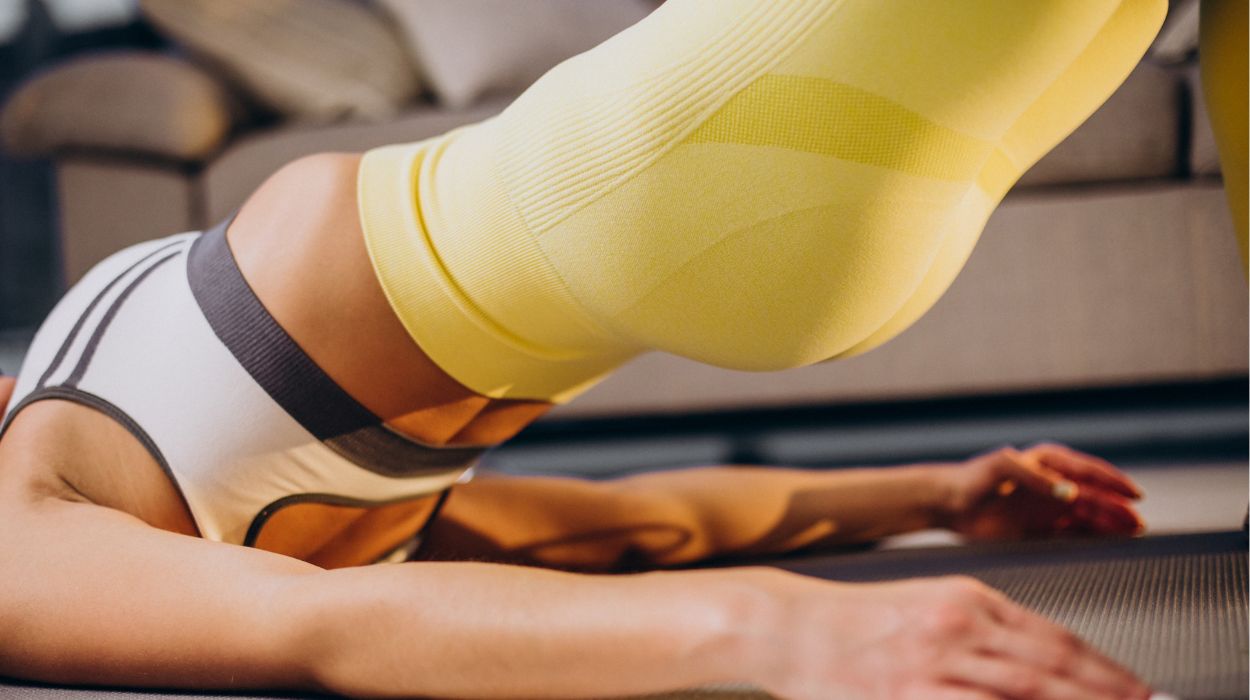
You can achieve a more sculpted look by strengthening and toning these key muscle groups:
Gluteus Minimus & Gluteus Maximus
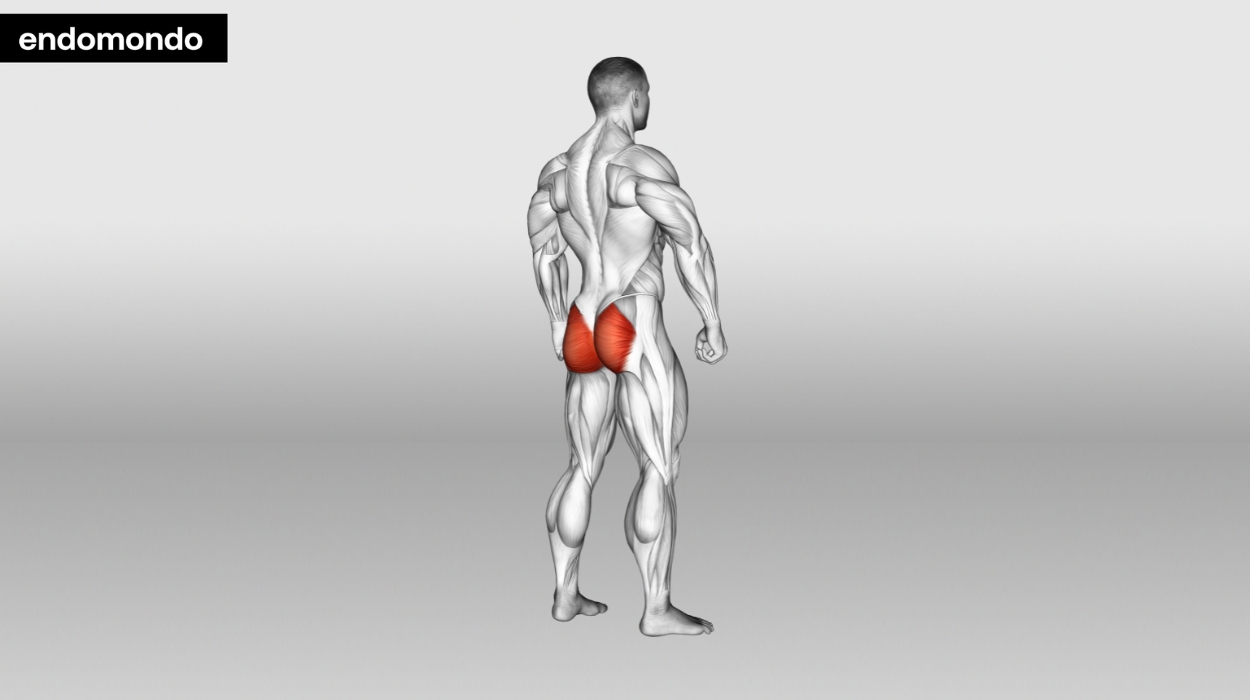
The gluteus minimus is one of the muscles in the gluteal region, located beneath the larger gluteus medius muscle. Targeting the gluteus minimus, alongside other gluteal muscles in the hip region, can help improve overall hip shape and bone structure. Exercises like side lunges, lateral leg raises, and clamshells effectively activate the gluteus minimus.
The gluteus maximus is the largest and most superficial muscle in the gluteal region. Focus on exercises that activate this muscle, such as squats, lunges, hip thrusts, and glute bridges. Doing this will help you develop athletic hips.
Core Muscles & Hip Abductors
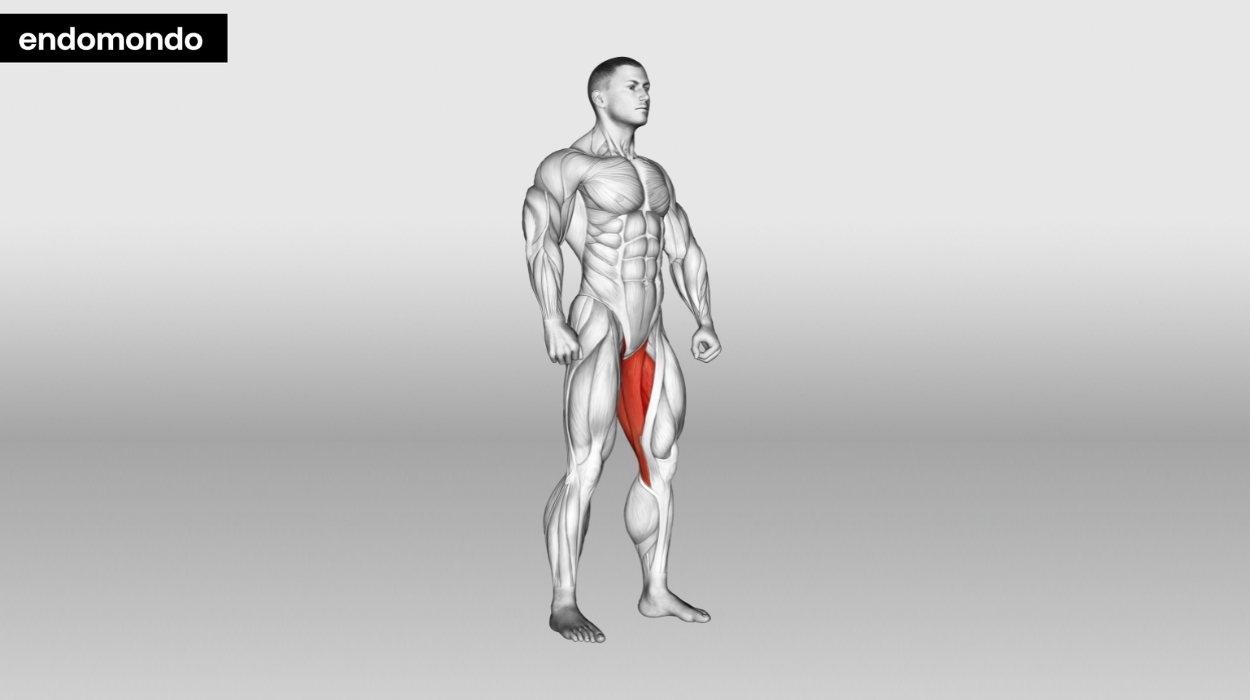
The core muscles refer to a group of muscles located in the abdomen, lower back, and pelvis. They provide stability, support, and strength to the entire torso, including the hip bones. Exercises like planks, Russian twists, hip thrusts, and bicycle crunches can target the core effectively.
The hip abductors are muscle mass located on the outer hips. Their primary function is to move the leg away from the body’s midline, a movement known as hip abduction. Doing this, in turn, ensures a wide range of motion.
Follow A Diet To Get Wider Hips
Understanding how to gain weight in the hips will help you achieve an all-around balance.
- Eat a balanced diet: Consume varieties of nutrient-dense foods[3] from all food groups. These may include; lean proteins, nuts, beans, milk products, whole grains, fruits, vegetables, and healthy fats.
- Consume adequate protein: Protein is essential to build more muscle, so include them in your meals. Examples of lean protein sources include; chicken breast, lean beef, shrimp, and fatty fish like salmon.
- Calorie balance: Knowing how to make hips wider involves drafting a moderate calorie-filled meal plan. Doing this will support muscle growth and add to your hip width.
- Healthy fats: Include sources of healthy fats in your diet, such as nuts, seeds, avocados, and olive oil. Healthy fats also provide essential fatty acids that support hormone production.
- Complex carbohydrates: Opt for complex carbohydrates like whole grains, brown rice, quinoa, and sweet potatoes.
Conclusion
While wide hips may be desirable, embrace and celebrate your unique body weight and prioritize well-being above societal beauty standards. Hopefully, this article has helped you to realize how to get wider hips without affecting your self-esteem. Whatever body weight you currently have, you can always work on it and make yourself happier.
Frequently Asked Questions
You can get bigger hips through healthy lifestyles, including a balanced diet and exercise.
Drugs may have adverse effects on you. Thus, always seek a doctor’s advice and stay away from self-medication.
Proteins are ideal for getting wide hips. They are crucial in forming bone structure and muscle growth. Thus, for the best result, include lean proteins, such as tofu and turkey.
Measure your hip and waist circumference separately. Then, use the result to estimate your waist-hip ratio.
You can solely decide if you want wider hips. However, estimating your hip-to-waist ratio will help confirm if you meet the societal standard if that’s your goal.
You can measure your waist-hip ratio yourself by simply using a measuring tape. However, feel free to consult a professional if you need more knowledge.
Squatting, alongside some other exercises, is effective in getting bigger hips and smaller waist. However, ensure you are consistent and you live a proper lifestyle.
The duration for getting wider hips varies with the individual. Your exercise intensity and diet routine will determine whether you will get a fast result.
Resources
- Aslam, M., Eckhauser, A., Dorminy, C.A., Dossett, C., Choi, L. and Buchowski, M.S. (2009). Assessing body fat changes during moderate weight loss with anthropometry and bioelectrical impedance. Obesity Research & Clinical Practice, [online] 3(4), pp.209–219. doi:https://doi.org/10.1016/j.orcp.2009.03.005.
- Bovet, J. and Raymond, M. (2015). Preferred Women’s Waist-to-Hip Ratio Variation over the Last 2,500 Years. PLOS ONE, [online] 10(4), pp.e0123284–e0123284. doi:https://doi.org/10.1371/journal.pone.0123284.
- National Cancer Institute. (2023). NCI Dictionary of Cancer Terms. [online] Available at: https://www.cancer.gov/publications/dictionaries/cancer-terms/def/nutrient-dense-food.




